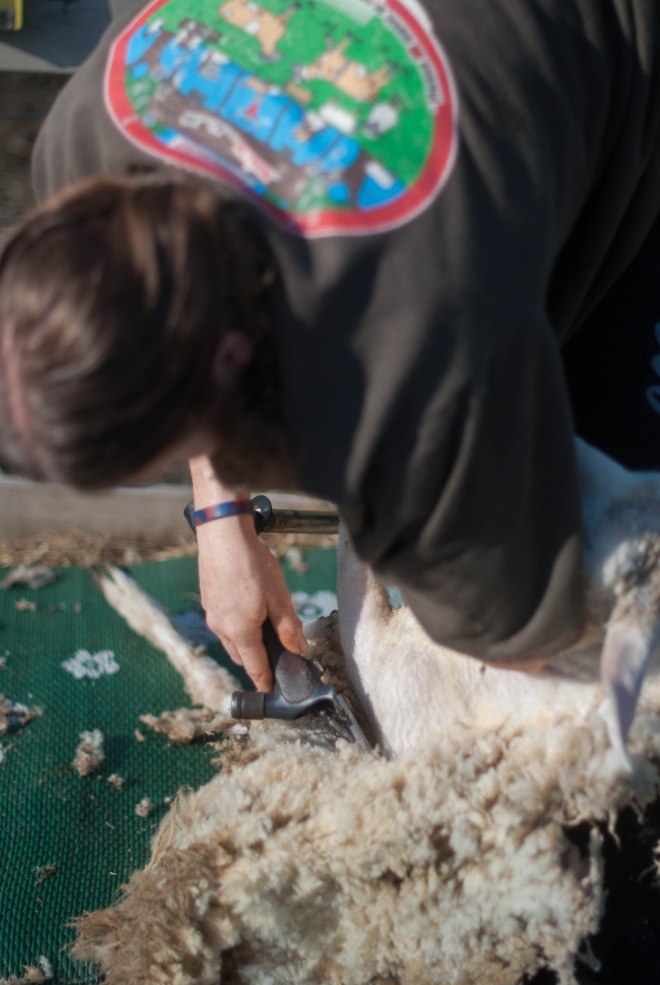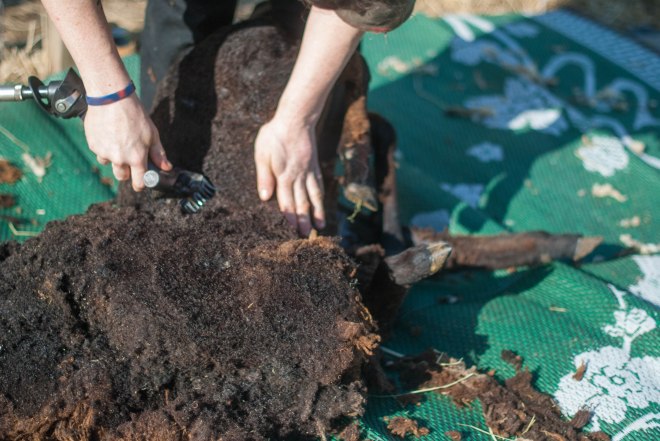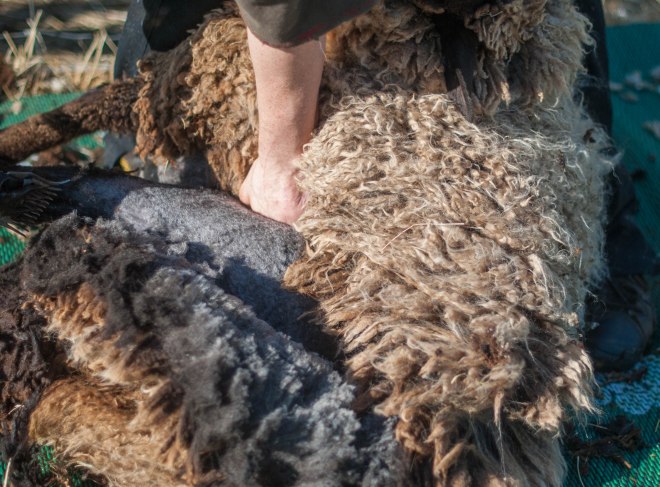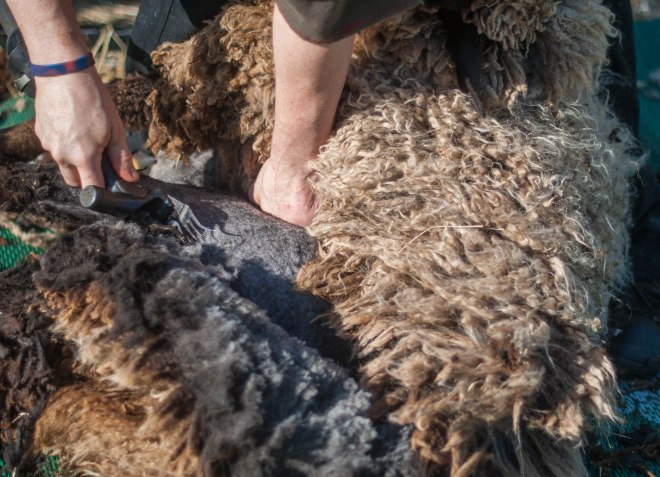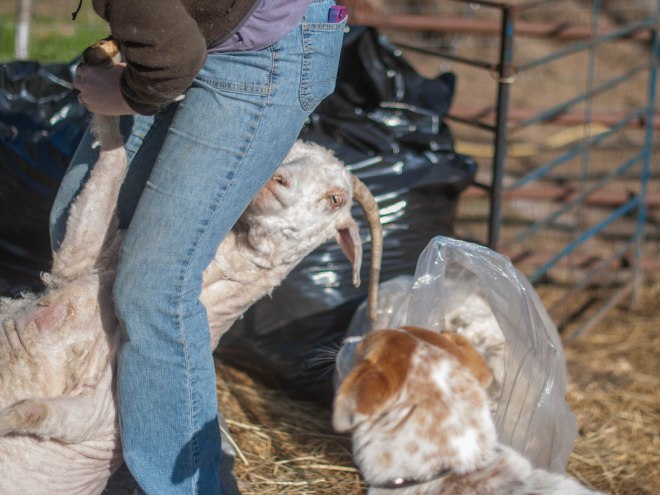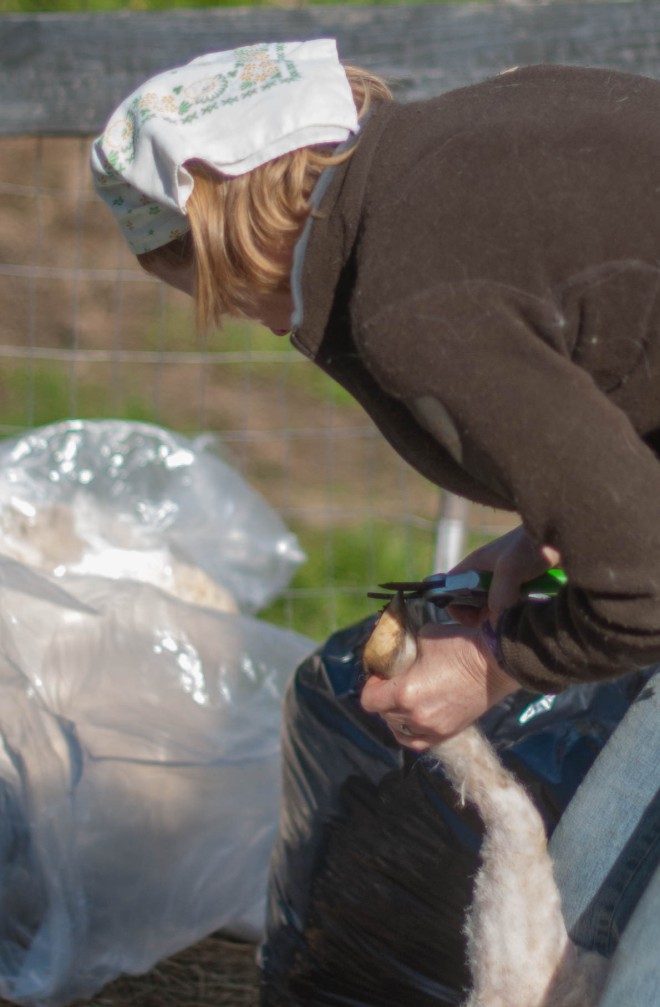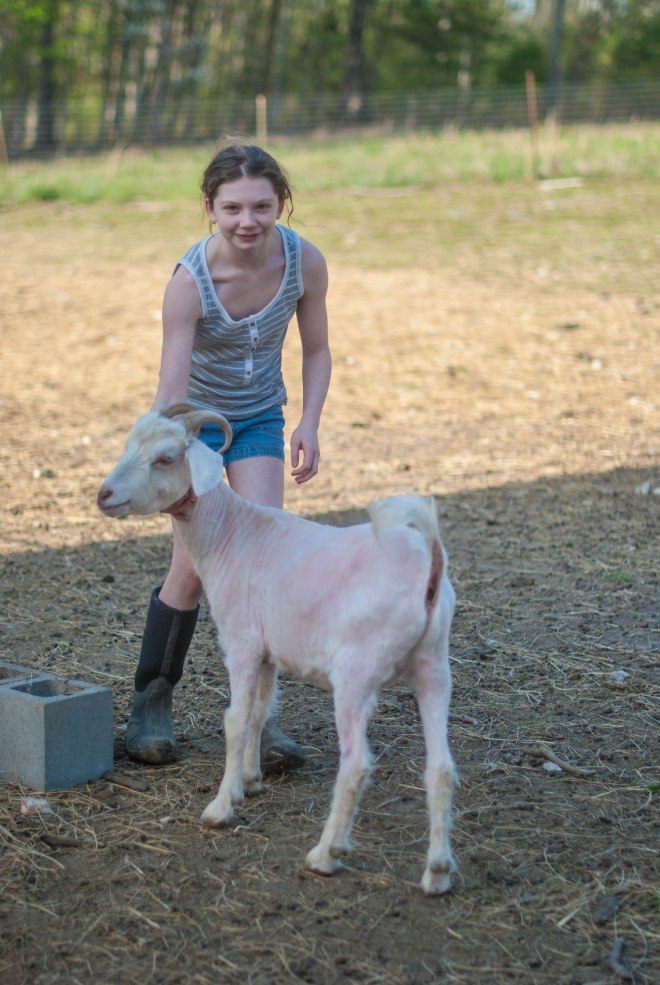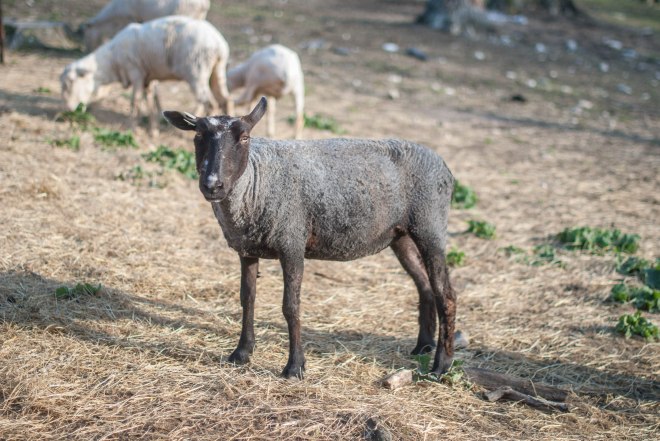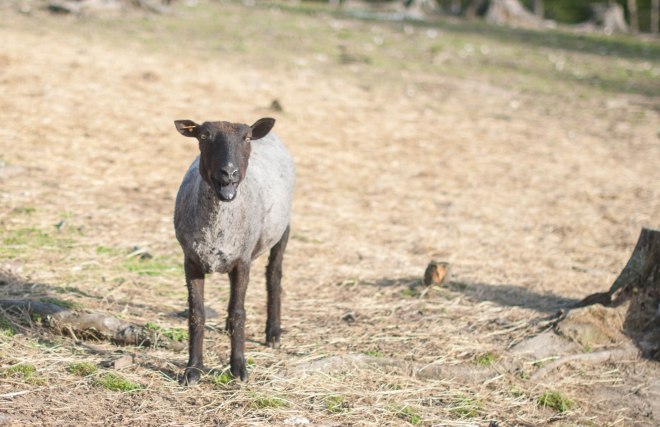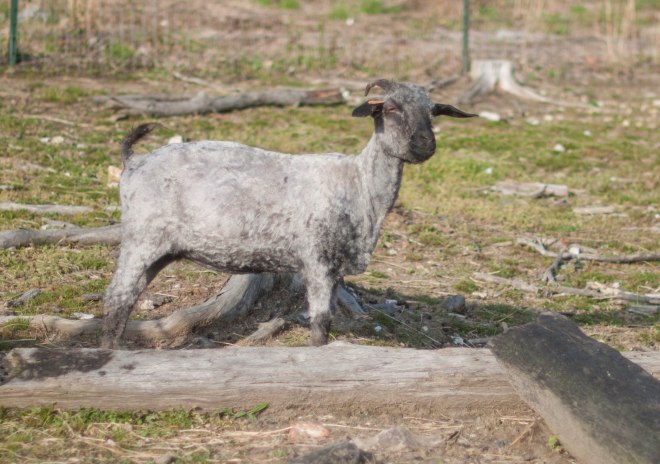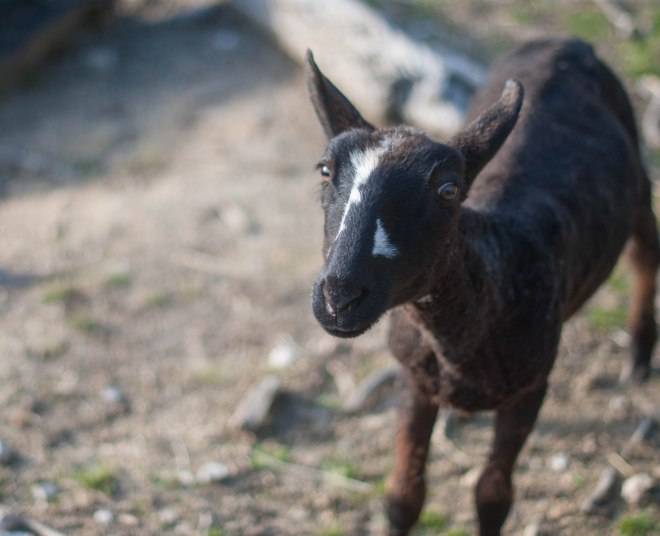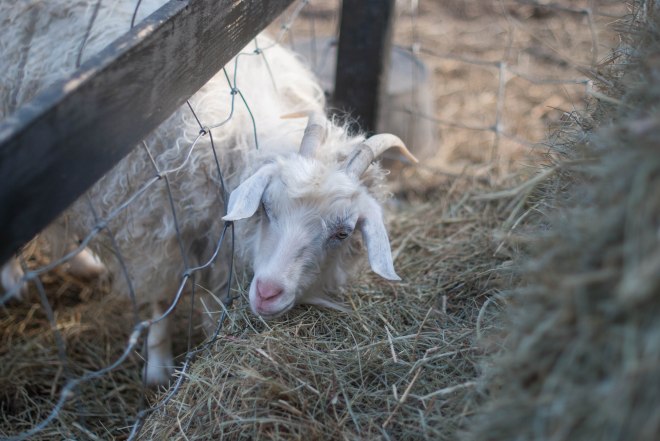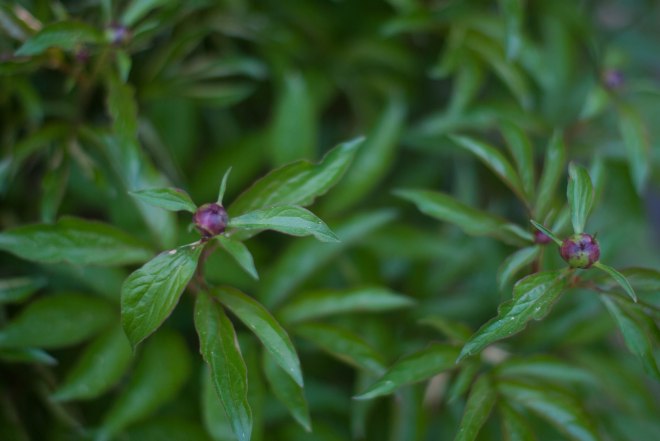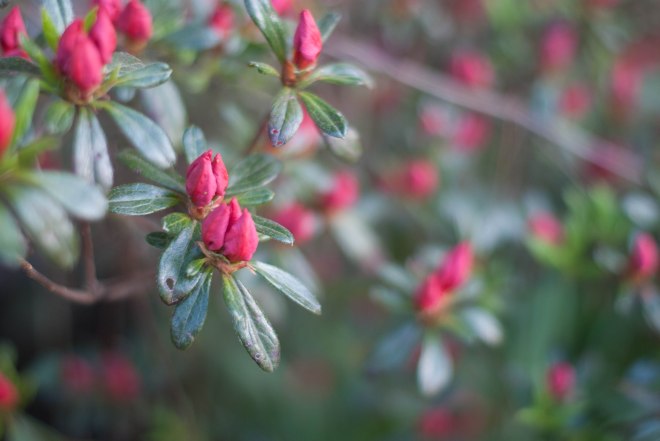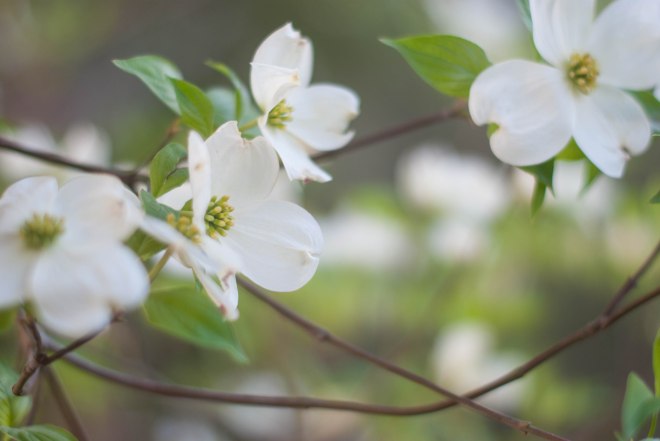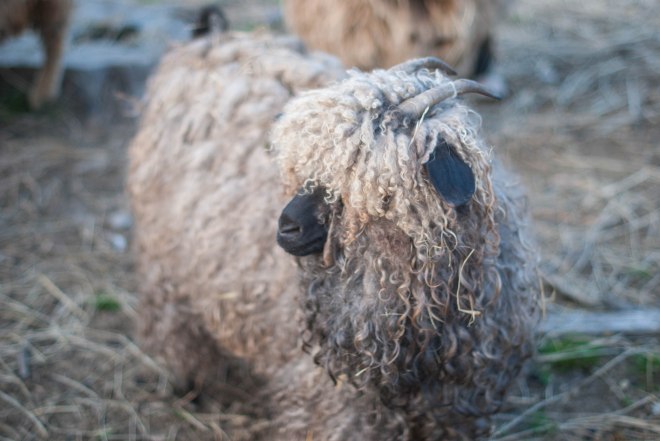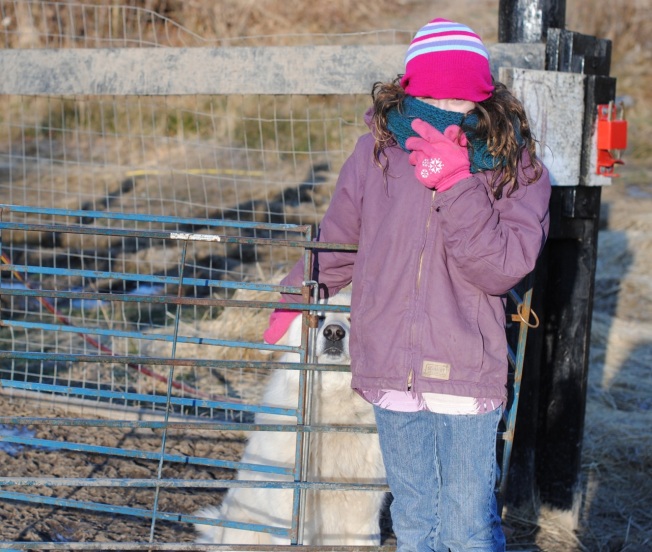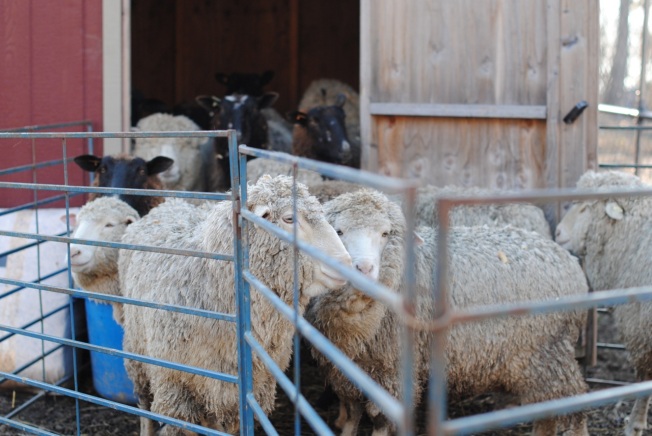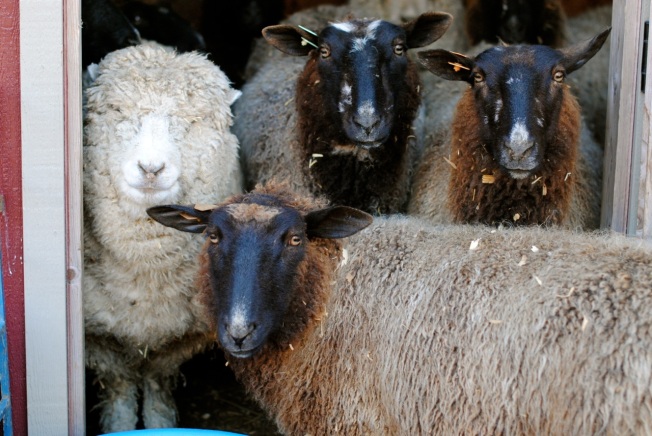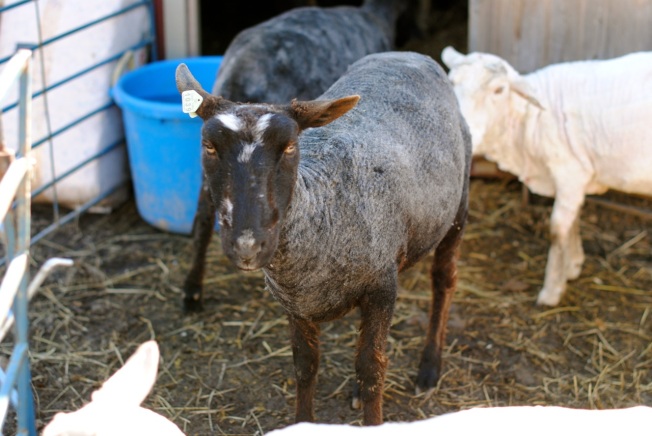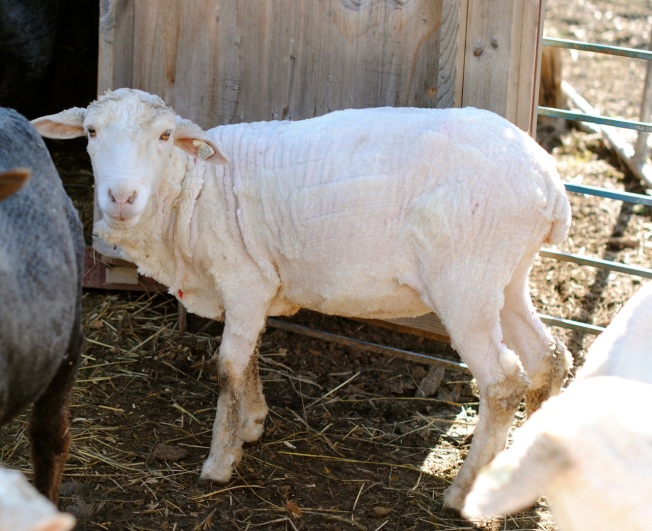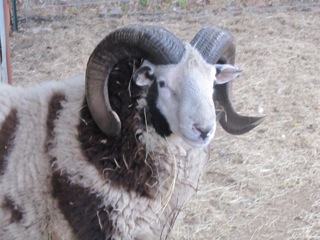If you’ve ever met Emily Chamelin, our shearer, you’re probably as much in love with her as I am. Every single time I watch her shear, I’m astonished by her strength, skill, and conscientious respect of the animal she’s working with. I sort of can’t decide whether I want her to be my older sister, or whether I’d just like to be her when I grow up. Suffice it to say that, if I can ever become as much of a badass as Emily, I’ll have accomplished something to be proud of (I asked Zac if this was even possible, and he said, “Well, you’ll have to work really hard.”)
Therefore, when Emily kept asking if I was going to come to Shearing School, and Susan said she’d pay to send me, I was over the moon!
Former Farm Manager Erin was also planning on going, so we decided to go together. Erin is another woman I admire to no end, not only because she’s a good friend who also happens to be way smarter and tougher than I am, but also because ever since I started working at the farm, my job has literally been, “Try and be as good as Erin.” Let me tell you, she’s a lot to live up to!
So, back in January, we sent in our checks and, in turn, received a page of information about what we’d be learning. Our Shearing School is put on every year by the Maryland and Delaware Cooperative Extensions, and is designed both to teach the shepherd how to take the fleece off a sheep, and also to serve as a source of continuing education for shearers.
As the time wore on, though, I became more and more worried about one bullet point– under “Items to Bring,” was listed “A body with the strength and willingness to learn to shear sheep.” Willingness, I could handle, but I wasn’t so sure about strength. Our classmates, whether farmers or not, would all be bigger and stronger than me– most people are, statistically speaking. Erin had been working out with shearing specifically in mind. I’d spent the three months since January joking about needing to start, but, of course, never did.
In the morning, when Erin and I walked up to the pre-class circle of would-be-shearers, our instructor was saying something about how, used to be, they advised you take the class only if you could bench-press 120 lbs. I assuaged my horrible sense of dread by thinking of when Emily learned to shear (never mind that she was 15 then, and I’m 23), thinking of everyone’s encouraging tweets and emails, and swearing that, if I made it through without serious embarrassment (cutting off an ear, or something even worse? being unable to even control my sheep?), I’d start running every day (which, of course, has yet to happen).
After a few shearing demonstrations and a rehearsal of the 5 positions of shearing, there really was nothing left to do but try it ourselves. “It’s just like learning to swim,” they told us, “You’ve gotta jump in!”. We all split up into groups of four, grabbed a sheep and a pair of clippers, and got to work.
Would you like to see how to shear a sheep?

Erin was braver than everybody else, and so went first.

To begin with, you sit the sheep up in front of you– this is first position. Starting at the breastbone (we called it the brisket!), start shearing off the belly wool.

Since this is the wool that’s dirtiest, it helps to go ahead and get it out of the way. It’s important to shear wide enough to make sure that you’re well-set-up for farther down the road.

After you take off the belly wool, you lean over further and take the wool off the legs and crotch, sort of scooping the clippers up the right leg, across, and down the left leg. The big danger here is accidentally shearing off a ewe’s teats, so you’re supposed to cover them up with your left hand (“you sure won’t shear ‘em off now!”).

Emily helps me navigate a tricky spot.

Once the belly, crotch, and legs are clean, you rotate about 90 degrees, change into second position, and start shearing her left hind leg (I’m using the feminine pronoun because, well, most sheep are ewes). It’s also in this second step that you clear the wool off from the tail area, and, since her head is easily accessible, shear off the topknot of fleece from the top of her head.
I love how much Erin’s smiling in this picture. Shearing is fun!

After than, you swing your legs around your sheep and into third position. You’re going to move your clippers up from the brisket along the neck, and end your stroke (or “blow,” as they’re called) under the left side of her chin. This is, in my opinion, the most thrilling– I mean that in both senses– part of shearing. You’re “unzipping” the fleece along the underside of the neck, and it definitely looks and feels the coolest, but it’s also terrifying.
Because (obviously) the sheep is covered in wool, you can’t tell where the wool ends and the sheep begins unless you have a very exact knowledge of her specific anatomy and musculature (more on this later). It’s pretty terrifying to move a pair of clippers into the unknown– rather, unknown, except for the knowledge that, if you make a mistake, you could cut your sheep’s neck pretty badly.
If one end of the error spectrum are nicks and cuts, then the other end of the spectrum is second cuts, which are short pieces of fleece that weren’t taken off with the first pass of the clippers. Second cuts cause all sorts of problems– if incorporated into yarn, they make it weaker, and cause it to pill more quickly– and so it’s important to keep them to a minimum. In fact, our instructors told us that we must not be so afraid of cutting the sheep, because, otherwise, all we’d do is make second cuts. I wasn’t so good at not being afraid (but, still, I nicked a few sheep).

After you’ve opened up the fleece along the neck, you keep making parallel passes with your shears– up from the chest, along the left side of the neck, ending right under the eye; up the chest, along the neck, end under the ear. This is the part when it’s easiest to take off an ear, so, just like with the teats, you’re supposed to find it, get hold of it, and make sure to keep it out of harm’s way.

Once the left side of the neck is clear, you start working on the left shoulder. Emily showed Erin and I a bit of weight-shifting footwork that helps get the sheep’s shoulder in a better position to shear.
The more you know about your sheep, the easier she’ll be for you to shear– and since she’s covered in wool, it can sometimes be hard to tell. If you know she’s fat, it’ll be, as Emily says, “Easy, like shearing a beach ball.” If she’s skinny, you’re going to have to work a little harder to navigate around the bony hips, shoulders, and spinal processes. Does she have two teats, or are there four (ewes sometimes have an extra vestigial set) to watch out for? If she’s a finewool sheep with Merino heritage (hello, Cormo), she’s going to be covered in the wrinkles and extra skin that those breeds were bred to have (more skin = more hair follicles = more wool per sheep), and you’re going to have to make sure not to nick those. If she’s in good health, she should shear easily. If she’s doing poorly, though, the lanolin (which usually melts a bit, and helps to lubricate the clippers) won’t flow so freely, and instead stays thick, like wax, and gums up your clippers.
I was continually amazed at the intimacy of it, and humbled by the amount of strength and knowledge required– I don’t think I’ve experienced anything like it in my past year of shepherding. It’s quite a thing to know there where, why, and how of every single inch of every single sheep, and then use that knowledge to navigate a potentially dangerous situation (those clippers are sharp), and end up with a valuable product (7 or 8 lbs of wool per sheep).
That said, it’s also hot, sweaty, greasy, difficult, dirty, exhausting, poopy, smelly, frustrating, and sometimes bloody. Dragging ourselves back to the hotel after the first day, I told Erin, “If anyone ever tells me shearing’s like a beautiful, graceful, athletic dance between the shearer and the sheep, I’m gonna punch ‘em in the face,” and there were plenty of jokes about, “Any job where your read end’s gotta be higher than your head– that’s not a good job!”
So, back to business.

Once the whole left side is clear, you slide the sheep down your shin and into fourth position. A big part of learning the positions is making sure the sheep is comfortable– the more comfortable she is, the less she’ll struggle and fight, and the easier it is for the both of you.
It’s time for what’s called the long blows, which are some of the easiest parts of shearing to learn (but hardest to master). They also look really cool. You move your clippers right across the body, tail to head. You keep making blows along the back, making sure to keep the comb of your clippers right along the curve of her back, until you’re one blow past her spine.
After that comes fifth position: swing your right leg around, pick up your sheep, and, holding her nose between your knees, start shearing down the right side– head, neck, and shoulder– rolling the sheep up towards you as you move down her body.
Once you’re past the shoulder, you start making diagonal passes down the right side– you’re almost done!

After making those diagonal passes down the sheep’s right side, all there is left to do is clear off the right leg and hindquarter.
See how Erin is using her left hand to put all her weight into the sheep’s right flank? That serves two purposes– 1) it straightens out the right leg, so that it’s easier to shear, and 2) it tightens up the skin, so that there’s less risk of it getting caught in the clippers. Honestly, there’s so much skin-tightening, head-holding, ear-grabbing, leg-straightening, and teat-saving done with the non-clipper-holding-hand, you might as well say that it did all the work! Nevertheless, both Erin and I had pretty sore right arms from holding on to those clippers! Not only are they pretty heavy, but they also 1) vibrate and 2) are dripping with motor oil and lanolin. It’s not easy.
But, once you’ve cleaned off that last leg, you’re done!
Emily actually took videos of both Erin and me finishing our sheep– they’re up on Facebook, if you’d like to see more.

And so, here I am after my first-ever sheep, grinning like a goofball.

She looks like a carpet after it’s been vacuumed!

But the job’s not over once the sheep’s shorn! In their varying levels of wholeness– ranging from the gorgeous waterfalls of wool produced by some of the experienced shearers to the utterly destroyed scraggles produced by all of us beginners– the fleeces were taken to the skirting table and sorted. As someone who erred on the side of second cuts, I felt a little guilty!
Erin and I came away from the weekend physically exhausted, but otherwise wildly enthused about shearing– not only are we planning on tagging along with Emily when she’s in Virginia next, but we’re also thinking of going up to Maryland for the wool pool (can you imagine seeing a whole state worth of wool, all in one place!?), and we definitely want to go to Maryland Sheep & Wool, too (anyone have a couch or a spare bedroom for us?).
All in all, I found that my favorite thing about shearing is the intense focus and drive that it gives you– as soon as you turn on the clippers, the world contracts to you, your sheep, and the noise of your machine (this is a bit of a lie. I had Emily coaching me– literally holding my hand in some parts– through my whole first sheep, which was the only reason my sheep looked so good.). The only important thing is getting the fleece off the sheep, and making sure they’re both in good condition by the end. No matter what happens– you cut your sheep? you feel tired? your sheep escaped from you? you seriously don’t think you can do it? It started raining and the barn roof started leaking onto your head?– you cannot and must not give up. You can do it because you must (does anyone remember the end of Bambi, where he’s been shot by a hunter, but there’s a forest fire, and the Great Prince of the Forest comes up and says, “Bambi! You must get up!”? It’s like that.), and I haven’t had that feeling since I got to help Susan pull a stuck lamb last spring.
It’s definitely a heck of a rush (although maybe that’s just from spending 30 minutes with all the blood going to my head!), and I can’t wait for the chance to do it again!

